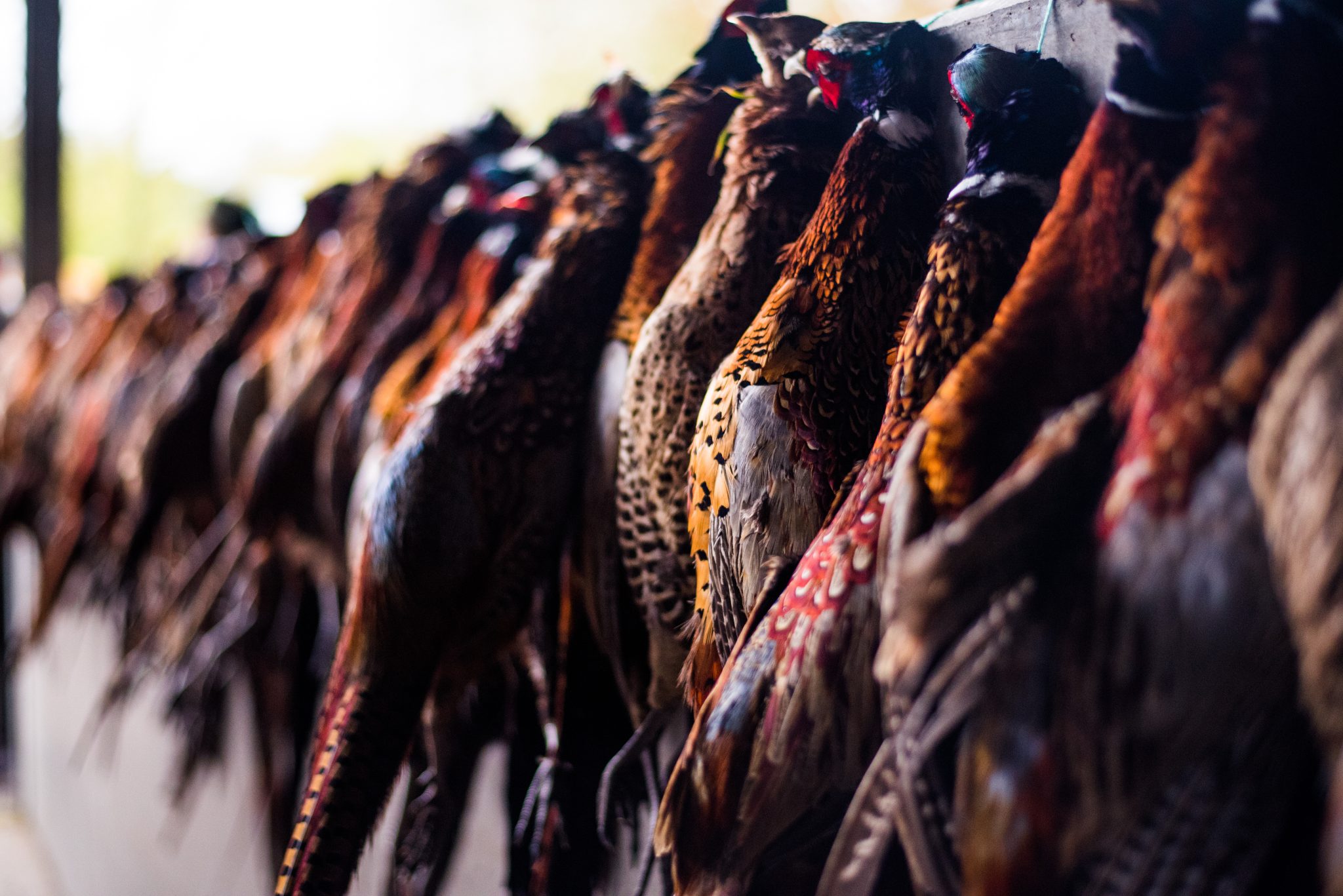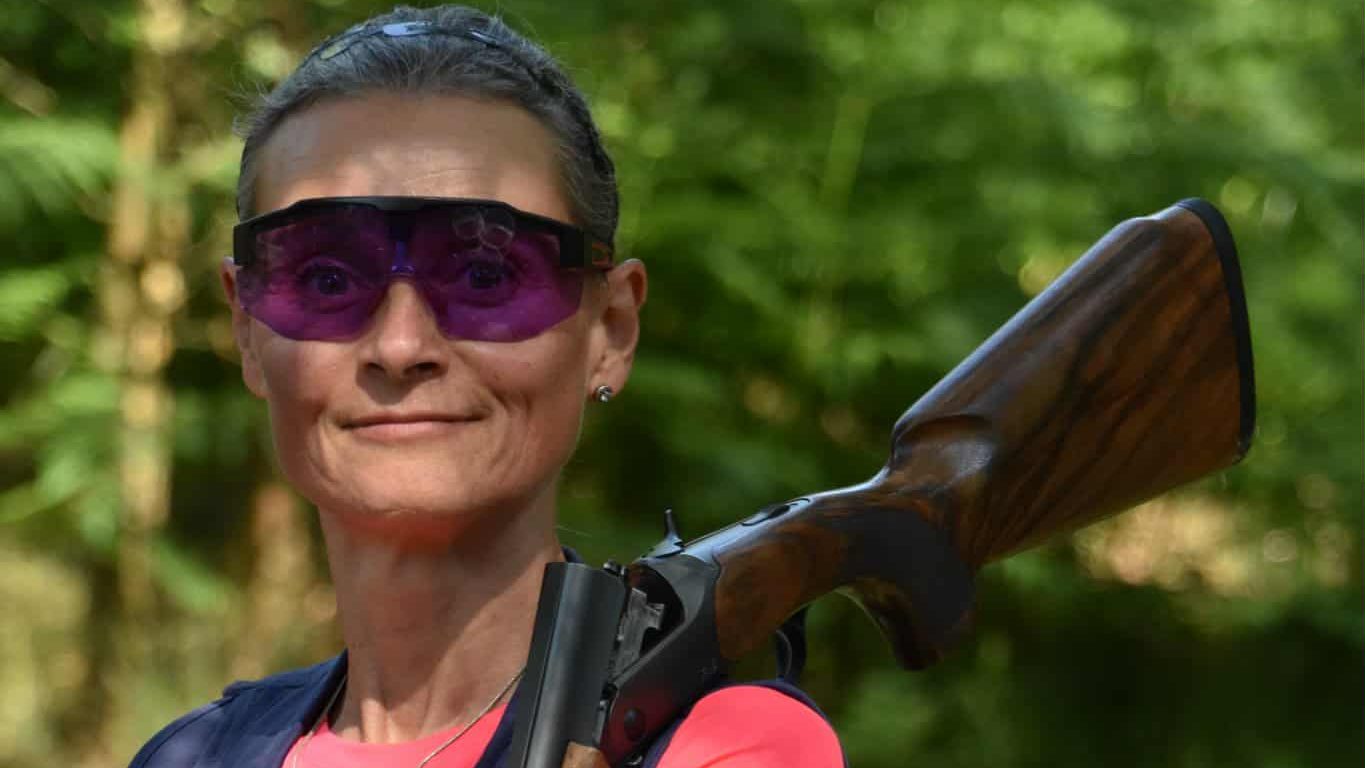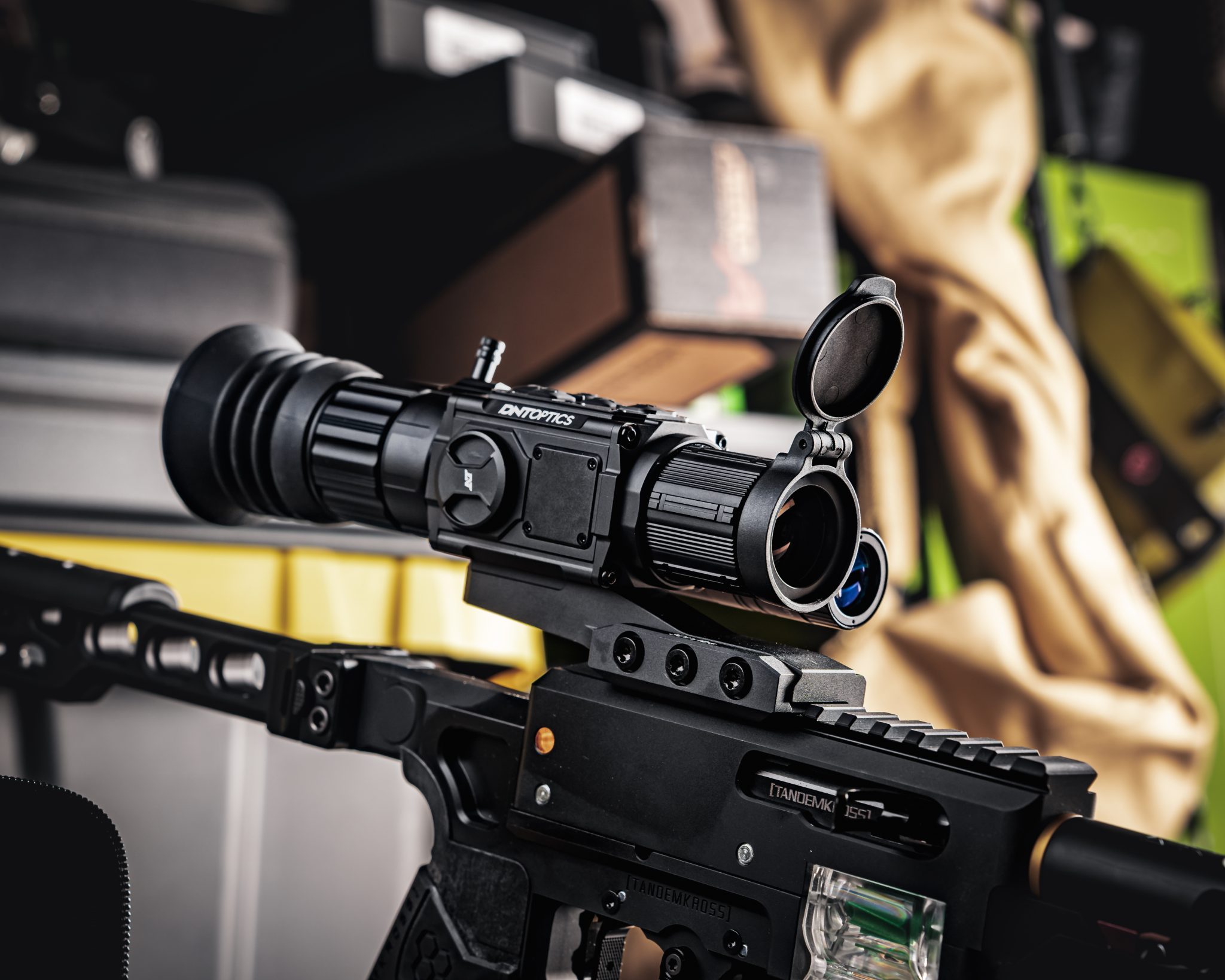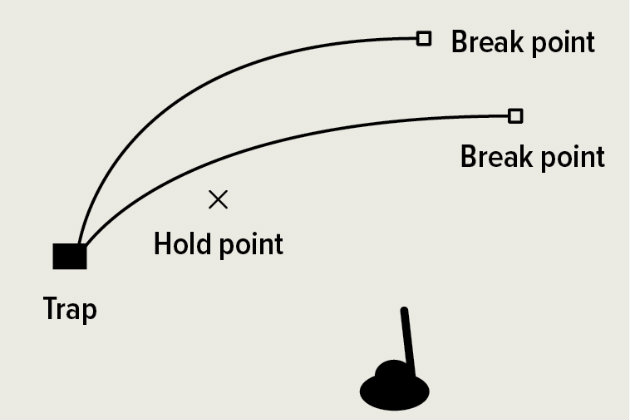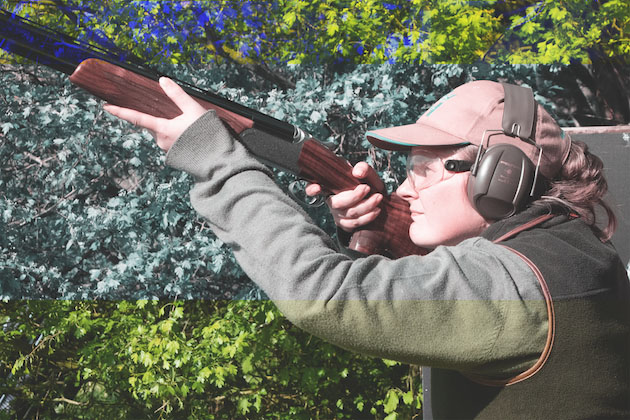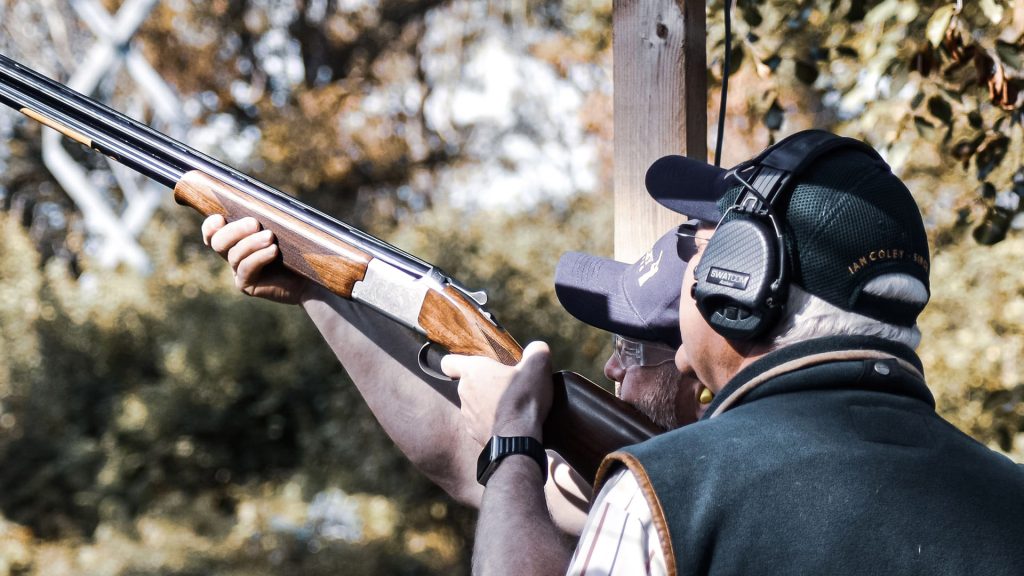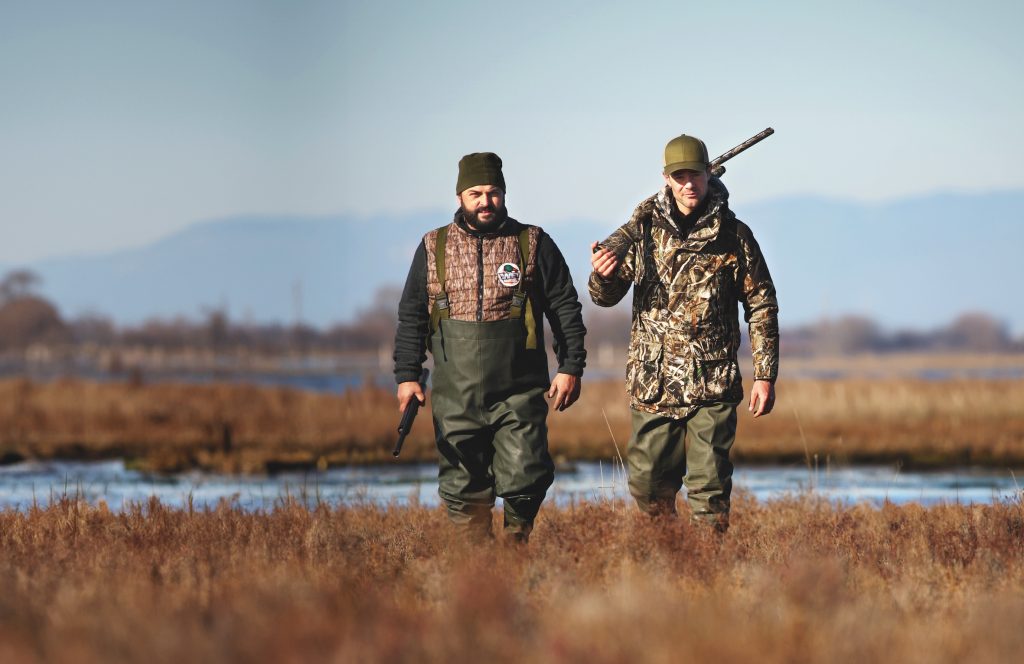The clay that’s crossing in front of the stand is probably one of the most common targets you’re ever likely…
Win CENS ProFlex DX5 earplugs worth £1,149 – enter here
Clayshooting lesson on long, slow crossers
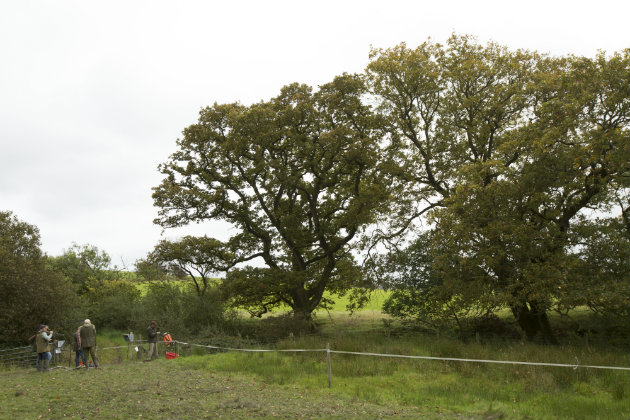
Jonty has has been enjoying his Krieghoff Parcours, which he has shot with for about a year and uses ¾ choke in both barrels with No8 shot Gamebore White Gold cartridges. He also offers tuition for gameshooters at the Crabtree Clay Shoot.
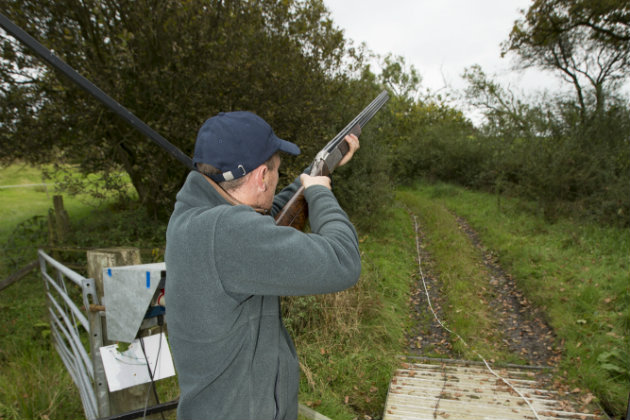
Jonty starts with the gun slightly out of his cheek
A clayshooting lesson on crossers
Jonty said: “With this pair of clays I would take the rear of the two first. This allows me to continue my swing onto the second without stopping. I would normally start with the gun slightly out of my cheek, pick up the clays early and match my gun speed to the speed of the clays.
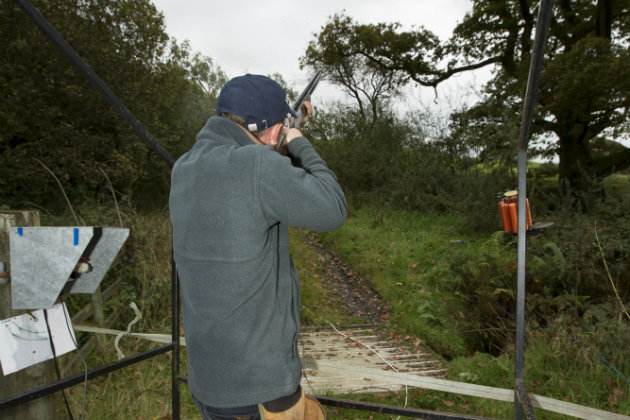
After taking the rear of the two clays first, Jonty swings through to the first without stopping
About half way through their trajectory I would mount and pull ahead of the first clay, and then take the second clay just before it is starting to drop. They are a difficult pair – if you mount too soon they can still be too far away and travelling fast, leave it too late and they dip and accelerate as they curl towards the ground – they are also obscured by the oak’s branches.
The slope of the ground can give the impression they are travelling much faster than they are. It is a fine line between shooting too early or too late. It is important to decide where you are going to break them. Mounting too soon can lead to hesitation and stopping your swing – it needs to be smooth and continuous.
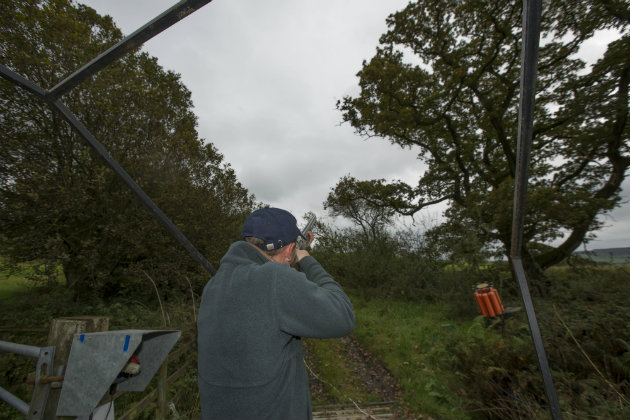
Once he’s picked up the clays, he mounts the gun about halfway through their trajectory
“After pulling ahead of the first clay and breaking it, I switch to the second clay, see my lead and fire. It is easy to shoot above these clays, which is something to remember as well. With regard to footwork I would normally be upright with my weight on my lead foot, which would be pointing where I intend to smash the clays. As with all clay shooting, practice is essential for learning how much lead to give, where and when to shoot, and reading what a clay pigeon is doing.”
Related Articles
Get the latest news delivered direct to your door
Subscribe to Shooting Times & Country
Discover the ultimate companion for field sports enthusiasts with Shooting Times & Country Magazine, the UK’s leading weekly publication that has been at the forefront of shooting culture since 1882. Subscribers gain access to expert tips, comprehensive gear reviews, seasonal advice and a vibrant community of like-minded shooters.
Save on shop price when you subscribe with weekly issues featuring in-depth articles on gundog training, exclusive member offers and access to the digital back issue library. A Shooting Times & Country subscription is more than a magazine, don’t just read about the countryside; immerse yourself in its most authoritative and engaging publication.



